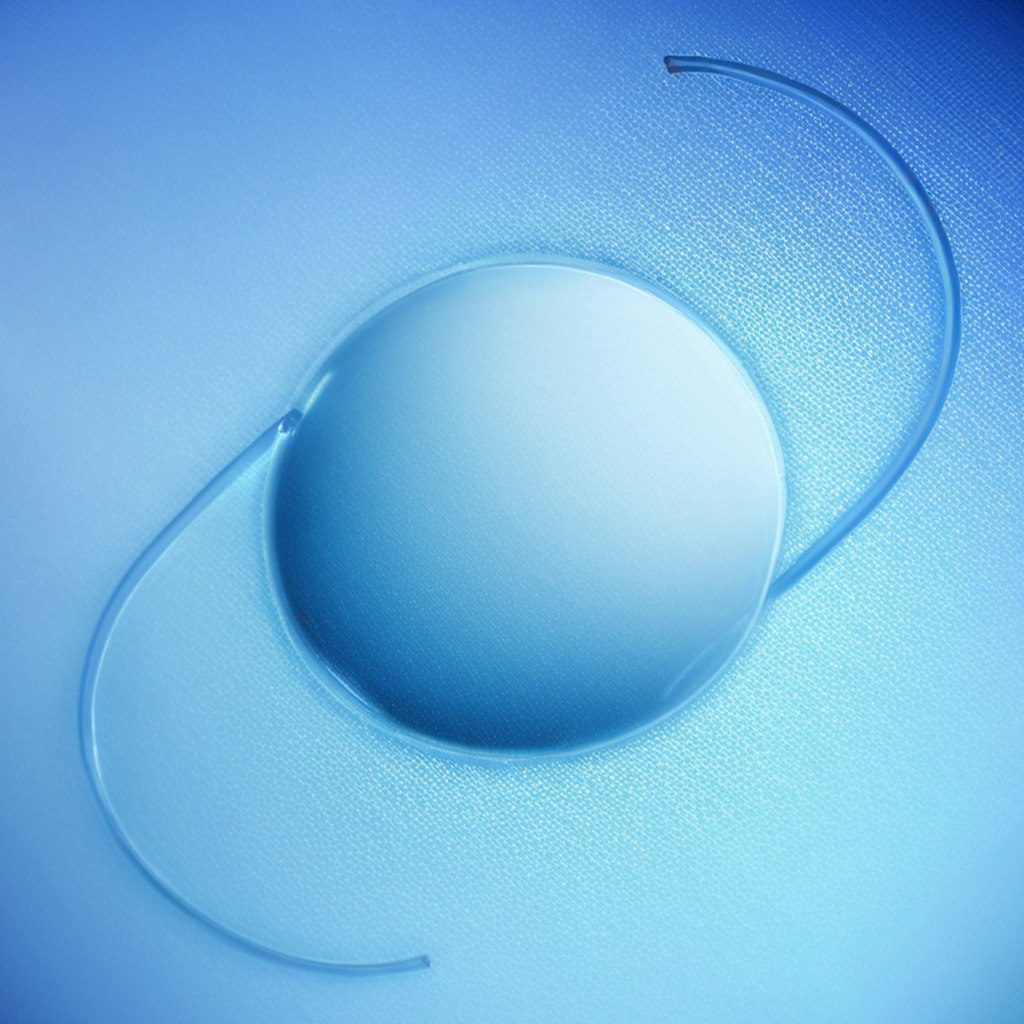
Cataract Surgery
Clear, sharp vision makes simple daily tasks possible and helps you enjoy life to the fullest. But what if your vision is getting cloudy?
The eye surgeons at Cornea Associates of Texas in Dallas, TX, can restore your vision with cataract surgery and advanced intraocular lenses.
Let's take a closer look at how removing a clouded natural lens and replacing it with an IOL can bring your life back into focus.

What Exactly Is a Cataract?
We have a natural lens in our eye behind the iris (the colored portion of our eye) that focuses light onto an important membrane called the retina. This process helps our brain create sharp, clear visual images.
Sometimes, tissues inside the lens start to break down and clump together, thickening and clouding the lens. This is called a cataract. Cataracts affect how light hits your retina, which can make your vision foggy and blurry.
Cataracts are most often caused by aging. Eye injuries, previous eye surgeries, or medical conditions such as diabetes can also increase your risk. It is rare, but some patients are born with cataracts.
Cataract Symptoms
Dim, blurry vision
Double vision
Decreased night vision
Halos and glare caused by light
Trouble seeing when driving
Have failed a vision test
A Look at the Cataract Surgery Procedure
Trust Your Care to Experts in the Field Combining Skill & Cutting-Edge Technology
We Are Experienced
Our eye surgeons have decades of combined experience performing the most complex cataract surgeries. Our team includes clinical professors of ophthalmology and we are actively involved in a number of prestigious organizations, including the American Academy of Ophthalmology and the American Society of Cataract and Refractive Surgery.
We Are Board-Certified & Award-Winning
Our doctors have years of specialized eye surgery training that many ophthalmologists do not. Our surgeons also passed an extremely difficult exam given by a distinguished board of their peers. Plus, a D Magazine poll recognized our team as the best eye doctors in the Dallas and Fort Worth, TX, metropolitan area.
We Use Advanced Technology
Our surgical centers feature state-of-the-art equipment, including Alcon Centurion® phacoemulsification tools and top-of-the-line surgical instruments. All pre-operative measurements are performed on the Zeiss IOLMaster® 700, and OCULUS PentaCam® HR topography aids us in lens selection. We are also proud to offer the Alcon ORA System® to fine-tune lens calculations intra-operatively, which can be particularly helpful for patients who have undergone previous refractive surgery.
We Make Simpler Post-Surgical Care Possible
On rare occasions, proteins can build up behind your implanted IOL, clouding your vision. We offer a safe, effective outpatient laser procedure called a YAG capsulotomy to break up this protein without further surgery. We also offer combination eye drops, minimizing the number of drops our cataract surgery patients have to remember to take.
Do I Need Cataract Surgery? Contact Us Today to Find Out

Cataracts can get worse over time and eventually lead to total vision loss. Scheduling a consultation with one of our esteemed, highly experienced eye surgeons at our Dallas, TX, Plano, TX, or Fort Worth, TX, offices can be the first step towards protecting your sight.
Our comfortable, state-of-the-art surgical centers feature the most advanced diagnostic tools, surgical lasers, intraocular lenses (IOLs), and safety protocols in the area. If you need surgery to remove a natural lens clouded by a cataract, Cornea Associates of Texas is the clear choice.
Discover why other ophthalmologists in the Dallas, TX, region send patients who need complex eye care to our board-certified, subspecialty-trained surgeons for world-class treatment. Contact us today using our online form or by giving us a call. It is our vision to restore your vision.
Schedule Your Cataract Consultation
"The result from my cataract surgery was excellent." Glowing Reviews for Cornea Associates of Texas
Dr. Zaffos is the most compassionate doctor I have seen in a very long time. His level of expertise is unparalleled. After seeing Dr. Zaffos, I have hope for improved vision, which I haven't had in a long time.
View on GoogleThe result from my cataract surgery was excellent. Because I had previous retina surgery, this was not the easiest cataract procedure. I found Dr. Nettune to be capable and kind. The support staff were knowledgeable, efficient and pleasant .
View on GoogleIs Cataract Surgery Covered by Insurance?
Plans differ, but most insurance plans offer some coverage for the surgery and monofocal IOLs. Our knowledgeable staff can work with your carrier to get you the maximum coverage possible.
Many of our patients choose to invest in extended depth-of-focus, multifocal, or trifocal lenses. These IOLs offer incredible benefits but do involve out-of-pocket costs. We accept major credit cards and you can also finance your cataract surgery through a trusted third-party lender, such as Wells Fargo Health Advantage®.
Contact us today for a personal estimate and more information on financing. Cataract surgery and the IOL implant may be an investment, but restored vision is priceless.

The Cataract Surgery Procedure
Depending on your case, the entire procedure may only take about half an hour per eye.
Combination Eye Drops for Streamlined Care
/
You should experience very little discomfort after surgery. Possible risks like mild pain, infection, or corneal swelling can be managed with specialized eye drops that we will provide you. These powerful eye drops require fewer doses than alternative medications.
"My focus is clearer than any time in my life." More 5-Star Reviews from Our Patients
Dr Bowman performed cataract surgery on my mom. He came highly recommended from a friend. He and his staff are absolutely amazing. They role model behavior and kindness and professionalism for this industry. It's the only reason I'm writing a review. I can't emphasize the staff enough - whatever their hiring process is, they should package and sell it. Blown away - thanks for the outstanding care. Dr Bowman himself takes time, no rush- just ideal.
View on GoogleAfter cataract surgery and toric lense implants in both eyes my focus is clearer than any time in my life. Dr. Nettune and his staff are very professional and personable. My questions were answered with courtesy and confidence. No arrogance here, no hurry, just efficient and exceptional communication and respect. The entire staff has great people skills. They know their job and perform it well. I highly recommend this practice for anyone needing corneal eye correction.
View on Google





